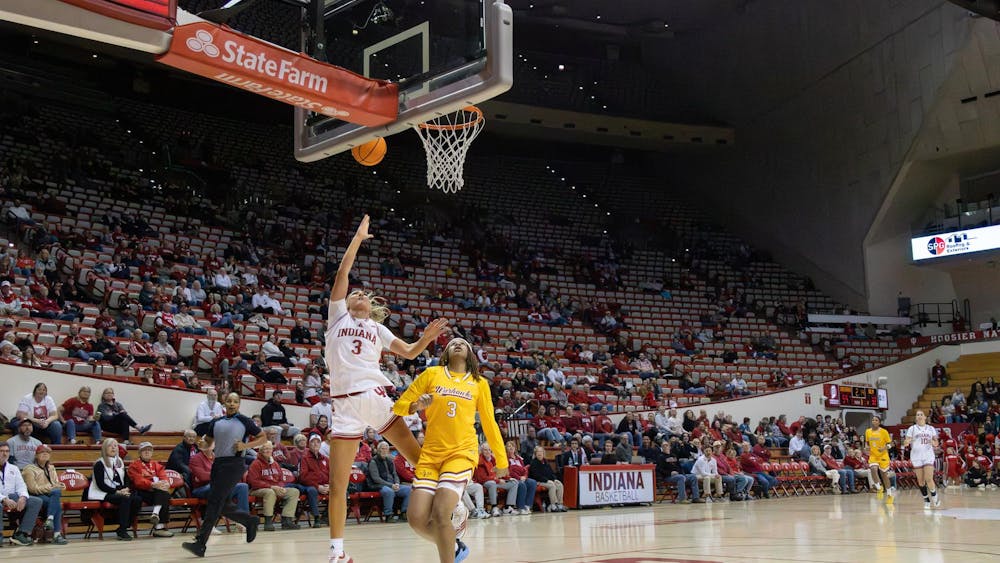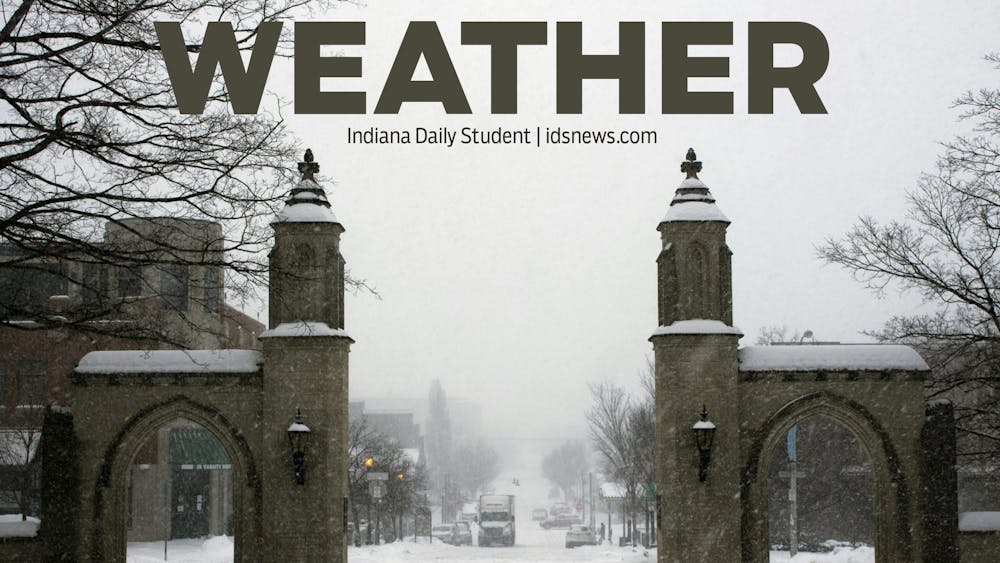Freshman Amber Watson walks across the Wright Food Court cafeteria, carrying a sub, soda, chips and a bag of Kellogg's Pop-Tarts toaster pastries.\nShe paid $1.49 for the Pop-Tarts.\nOnly about 100 yards west, 10th Street Market, a small Asian market, sells Pop-Tarts for 73 cents a bag including tax. But Watson said she'd rather buy it at the food court to use her meal points.\nLike Watson, meal-point holders keep buying at the IU-run cafeterias and convenience stores, though most items are 10 to 200 percent more expensive than outside the university. This phenomenon is partly due to meal points, which IU Residential Programs and Services requires students to buy to live in dorms. Meal points have no monetary value outside the university and are nearly non-refundable under the meal-plan contract and cannot be rolled over from one academic year into another.\n"We have no choice," said freshman Elizabeth Jones. "We have to use them. Otherwise, we'll lose money."\nThis semester, about 10,000 people, mostly dorm residents, have bought meal points worth $23.1 million, according to data provided by Sandra Fowler, RPS dining service director. About 95 to 97 percent of the revenues cover costs, and RPS programs spend the rest, she said. Any funds left go to the university. \nRPS officials, who track students' buying habits mostly by statistics, translate steady sales as students' willingness to trade current prices for convenience, said Graham Shepfer, RPS special services and food services coordinator.\n"The majority seems to say, 'OK, well, I don't like this price but want that item. And I don't really want to go out to town to get it, so I'll get it right here,'" Shepfer said.\nFreshman Mateo Huerta said the convenience is important but still overvalued. He holds a 24-ounce bottle of Dasani mineral water he bought at the Wright food court for $1.39, 30 percent higher than $1.05 including tax at Mr. D's, where he said he often visits.\nDevon Novotney, a freshman living in the Eigenmann dorm, said the dorm's convenience store, or C-store, is worth the high prices, as he doesn't have to trek through the winter cold to the Village Pantry, a two-minute walk away. But he calls the current prices "ridiculous."\nIn late 2001, the IU Student Association discovered that a group of 30 items in C-stores cost $108.40, up 41 percent than $63.95 at retailers like Kroger and Marsh.\nBut the methodology is unfair, Fowler said.\n"Our customer base is much less than major grocery chains, so our purchasing power is not that of a Kroger or Village Pantry," she said. \nAli Akhras, who owns and manages the 10th Street Market, a non-chain store that mainly targets the Asian population, disagrees. \nRPS can work harder to cut costs to offer lower prices, said Akhras, who drives to Chicago every Wednesday looking for wholesalers with the best deals.\nBut the current prices are the best RPS can offer because of unusually high costs of running the food courts and C-stores inside expensive campus buildings, said Brian Barker, RPS C-store coordinator with 10 years of retail and wholesale experience. Diversifying brand products is expensive, and the RPS's hurried launch of its C-stores between 1998 and 2000 has proved costly. To respond to what students said they needed, the organization set up those stores without much financial assessment or business deals.\n"The students didn't want a traditional dining setting," Barker said. "And that promoted all this." \nThe C-stores' prices will gradually drop to near Village Pantry's in a few years, Barker said. For three years, he has called manufacturers like Kellogg's Co. to advertise IU's buying power. Today, they and RPS are designing contracts, which will bring lower prices. Also, RPS has just changed its wholesaler and is computerizing its operation to cut costs.\n"Will it get better? Yes," Barker said. "It's just starting to get there. And that's what I want students here to know."\nThe RPS grants refunds under rare conditions, such as medical and dietary problems, family emergencies and military or academic events, Shepfer said. \n"I've got quite a few requests, 'I'm not using my plan, and can I have reduction?' The answer in almost all these cases is, 'No,' Shepfer said. "RPS normally rejects financial hardship as a reason for refund."\nStudents can have half of their meal points refunded if they graduate in December, Shepfer said. \nStudents' buying peaks around the end of the academic year when RPS nullifies their remaining meal points, said senior James Hooten, who spent his sophomore year working part-time at the Willkie C-store. Tired of food sold at RPS services, students rush to buy boxes of soup or shampoo.\n"They don't want to lose their points for nothing," Hooten said.\nBut the buying rush is due to students' unsound money management, Winstead said. If they spread their meal points over an academic year, it takes around 13 points a day to consume all of them, he said.\nRPS officials have been discussing whether to let students roll over points from a year to another, "but it can't just happen within a year," Winstead said. "You have to look at financial impact it may have"
Meal point dilemma
Students 'locked-in' to using university meal points in the dorms
Get stories like this in your inbox
Subscribe





